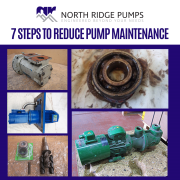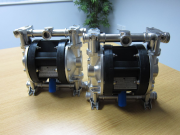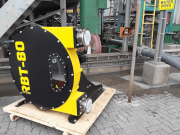
Has your maintenance budget shrank for 2021?
Are you having to frequently replace the same spare parts consistently?
7 Steps you can take to reduce maintenance costs in 2021:
 Have a Lubrication & Inspection Schedule
Have a Lubrication & Inspection Schedule
Insufficient lubrication & too much lubrication is often a cause of bearing failure.
If a seal leak remains undetected, fluid will leak from the pump casing into bearings which if left unresolved, can lead to catastrophic pump failure.
Our maintenance schedule provides indicative time frames for sceduling maintenance.
 Check actual pump duty vs design duty
Check actual pump duty vs design duty
Over time a pumps performance may deteriorate or the conditions it faces change. A pumps performance should always be checked to ensure it is not cavitating. A doubling in wear ring clearances can mean NPSH increases by 50%. This pump suffered catastrophic failure after cavitating resulting in a cracked impeller.
 Drop In Replacements
Drop In Replacements
Pump Inserts or bareshaft pumps ensure replacement pumps can be placed into process with minimal disruption or downtime ensuring process uptime
 Change Pump Design:
Change Pump Design:
Some designs of pump, like in the below comparison have far more spare parts than other models. Maintenance can become puzzling trying to refit all parts, along with time pressure constraints meaning mistakes are likely.
Maintenance can often take longer than is required on inferior designs which is not always apparent at the time of purchase of a pump. The time taken to service some pumps can be reduced by up 50% when specified correctly.

 Change Pump Type
Change Pump Type
Not all pumps are created equally. Some designs are better suited for abrasive slurries, can accommodate dry running and better suited for 24/7 operation. Changes in pump types can mean energy savings of between 20-30% with equivalent reduction in spares costs.
By re-evaluating your current application against the pump type in use, could mean another solution is better suited as in this case study
 Increase Pump Size
Increase Pump Size
More often than not, a pump is installed in an application based on cost rather than factoring full application details. Units may be operating too fast meaning spares are being replaced frequently. Increasing the pump size and running it slower is often a way of ensuring longevity by reducing wear.
 Pump Monitoring
Pump Monitoring
Remotely monitoring your pump can mean early detection of a reduction in flow or pressure, vibration, excess temperature or increase in power consumption.
This enables condition-based maintenance to be undertaken before failure and requirements become urgent.
It also means pumps are dismantled when required rather than unnecessarily.
If you are interested in reducing labour costs further, our article here provides 17 ways in which a pump can be automated.
Follow us on Linkedin to see pump overview videos, working animations and other tips.
If you would like to discuss implementing any of the above with a technical engineer, call us on 01773 302 660 or email sales@northridgepumps.com.
